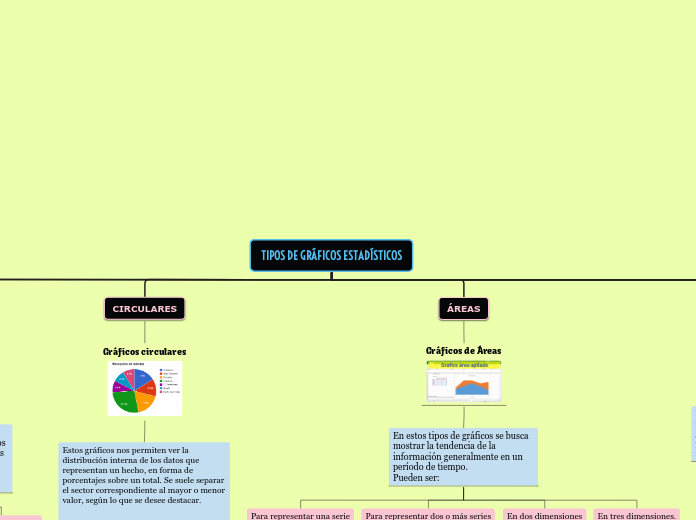TIPOS DE GRÁFICOS ESTADÍSTICOS
Identify how rainforest animals have adapted to live in this unique environment.
Rainforests in Central America, Amazon, Asia, Africa, and Australia cover about 6% of our earth's surface, but they are the home ground for more than half of the species of animals in the world.
PICTOGRAMAS
Los pictogramas son gráficos similares a los gráficos de barras, pero empleando un dibujo en una determinada escala para expresar la unidad de medida de los datos. Generalmente este dibujo debe cortarse para representar los datos.
Es común ver gráficos de barras donde las barras se reemplazan por dibujos a diferentes escalas con el único fin de hacer más vistoso el gráfico, estos tipos de gráficos no constituyen un pictograma.
Pueden ser:
DISPERSOGRAMA
Son gráficos que se construyen sobre dos ejes ortogonales de coordenadas, llamados cartesianos, cada punto corresponde a un par de valores de datos x e y de un mismo elemento suceso.
HISTOGRAMAS
Estos tipos de gráficos se utilizan para representa distribuciones de frecuencias. Algún software específico para estadística grafican la curva de gauss superpuesta con el histograma.
MIXTOS
En estos tipos de gráficos se representan dos o más series de datos, cada una con un tipo diferente de gráfico. Son gráficos más vistosos y se usan para resaltar las diferencias entre las series. Pueden ser:
CARTOGRAMAS
Estos tipos de gráficos se utilizan para mostrar datos sobre una base geográfica. La densidad de datos se puede marcar por círculos, sombreado, rayado o color.
ÁREAS
Gráficos de Áreas
En estos tipos de gráficos se busca mostrar la tendencia de la información generalmente en un período de tiempo.
Pueden ser:
En tres dimensiones.
Para representar dos o más series
Para representar una serie
CIRCULARES
Gráficos circulares
The Madagascar Hissing Cockroach
has become famous because of its bizarre way of producing sounds. This cockroach makes a hissing sound by pushing air through tiny holes in its body.
Estos gráficos nos permiten ver la distribución interna de los datos que representan un hecho, en forma de porcentajes sobre un total. Se suele separar el sector correspondiente al mayor o menor valor, según lo que se desee destacar.
Se pueden ser:
En tres dimensiones
En dos dimensiones
LÍNEAS
Gráficos de líneas
The Silvery Gibbon
can only be found on the island of Java, Indonesia. Due to their isolated location, it is estimated that less than 2000 Silvery Gibbons are currently living in their natural habitat.
En este tipo de gráfico se representan los valores de los datos en dos ejes cartesianos ortogonales entre sí.
Se pueden usar para representar:
Estos gráficos se utilizan para representar valores con grandes incrementos entre sí.
Dos o más series
BARRAS
Gráficos de barras apiladas
Se usan para mostrar las relaciones entre dos o más series con el total.
Las barras pueden ser:
Gráficos de barras proporcionales
Se usan cuando lo que se busca es resaltar la representación de los porcentajes de los datos que componen un total.
Las barras pueden ser:
Gráficos de barras comparativas
Se utilizan para comparar dos o más series, para comparar valores entre categorías.
Las barras pueden ser:
Horizontales
Verticales
Gráficos de barras horizontales
The Sloth
is an extremely slow-moving mammal found in the rainforests of Central and South America.
Representan valores discretos a base de trazos horizontales, aislados unos de otros. Se utilizan cuando los textos correspondientes a cada categoría son muy extensos.
Para dos o más series
Para una serie
Gráficos de barras verticales
The Toucan
is one of the most important species in the rainforest because it spreads the seeds of the fruits and plants that it eats, therefore contributing to plant biodiversity.
Representan valores usando trazos verticales, aislados o no unos de otros, según la variable a graficar sea discreta o continua. Pueden usarse para representar:
Which layer of the rainforest does the toucan belong to?
The rainforest has 4 main layers:
- Forest floor - very dark, plants deteriorate quickly due to the lack of sun;
- Understory layer - plants with big leaves so that they can reach the sun, large concentration of insects;
- Canopy layer - primary layer on top of the first two, a mix of leaves and branches, many animals live here;
- Emergent layer - formed by the tallest trees, hardwood trees with broad leaves, plenty of sun.
Dos o más series (también llamado de barras comparativas)
Una serie

